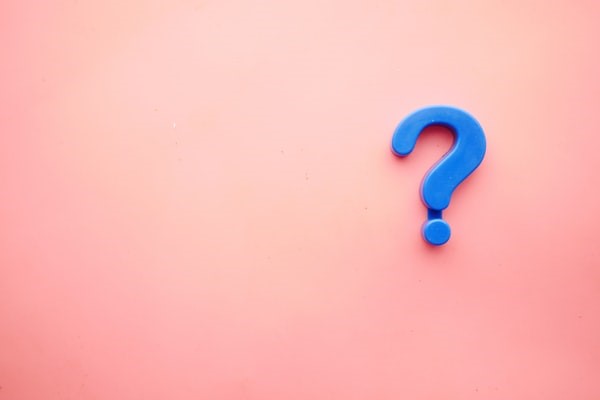Latest News
Analyzing Data With Bubble Graphs

Data is essential for business operations because it is what allows businesses to understand their customers, track their progress, and make informed decisions. Data is also necessary for marketing and advertising, which is essential for any company looking to grow.
Businesses use data to get a better idea and profile of their customers. By understanding who their customers are, what they want, and how they behave, businesses can create products and services that appeal to them. They can also target their advertising and marketing to reach the right people. Additionally, data is essential for tracking progress. By tracking data, businesses can see what is and isn’t working. They can identify successes and failures and learn from them, which allows businesses to continually improve their products and services. Finally, data is necessary for making informed decisions. By understanding the data, businesses can see what is working and what isn’t. They can then make decisions that will help them reach their goals.
There are a variety of different ways that businesses can make sense of their data, and one of the most popular methods is through data visualization. This involves taking all of the data that a business has collected and presenting it in a way that is easy to understand and analyze. This can help businesses to identify trends and patterns that they may not have been able to see before. Data visualization can be done in a number of different ways. One of the most common ways is to create graphs and charts, including bar graphs, line charts, scatter plots, pie charts, and bubble graphs. Continue reading to learn more about bubble graphs and how to use them to analyze data.
What is a bubble graph?

A bubble graph is a graphical representation of data in which the size of the circles (bubbles) is proportional to the magnitude of the data. The circles are placed on a grid, and the grid is used to indicate the relative position of the circles, which allows for the easy identification of outliers and trends in the data. The data can be plotted on a number of different axes, including time, money, or quantity.
The history of bubble graphs can be traced back to the early 1800s when a mathematician named Charles Joseph Minard created a now-famous diagram depicting the losses and gains of the French army during the Napoleonic Wars. This diagram used small circles to represent the size of the army at different points in time, and it is considered to be one of the earliest examples of a bubble graph. However, bubble graphs didn’t gain much popularity until the late 1990s when they were used by researchers to visualize stock market data. In the early 2000s, bubble graphs started to be used by business analysts to track the performance of companies, and in recent years, they have been increasingly used by journalists and bloggers to visualize data about a wide variety of topics.
How do you use a bubble graph to analyze data?

Bubble graphs are used to visualize trends and relationships in data, such as displaying data that is broken down by category. The circles can be placed in different colors to indicate the different categories. Bubble graphs can also be used to compare data. For example, you could compare the sales of different products in different years. Further, bubble graphs can also be used to show trends. For example, you could use a bubble graph to show how the number of people who have a particular disease has changed over time.
A bubble chart is a versatile tool that can be used to display a variety of data. There are a few ways businesses can take advantage of bubble charts. The first is to use bubble charts to display data about their customers. This could include data about customer demographics, buying habits, or preferences. This information can help businesses better understand their customers and create marketing strategies that target specific demographics.
Another way businesses can use bubble charts is to display data about their products. This could include data about sales, market shares, or customer feedback. This information can help businesses make better decisions about which products to produce and how to market them.
Bubble charts can also be used to display data about competitors. This could include data about market shares, sales, or product offerings. This information can help businesses understand how they compare to their competitors and make decisions about how to compete.
What are the best practices when creating a bubble graph?

To create a bubble graph, you will need a data set and a software program that can create graphs, such as Microsoft Excel or Google Sheets. First, open your software program and create a new spreadsheet. Enter your data into the spreadsheet and select the data you want to graph. Select a chart type that allows for multiple data sets, such as a bubble graph. The software will create a graph based on your data. Adjust the settings, such as the size of the bubbles and the gridlines, to make the graph easier to read. Save the graph as a PDF or image file.
When creating a bubble graph, there are a few best practices to follow in order to ensure that your data is well represented. First, make sure that your data is correctly formatted. Your data should be formatted in a way that is easy to read and understand. The data should be arranged in columns, and each column should represent a different attribute of the data. Then, choose the right type of bubble graph. There are a few different types of bubble graphs that you can choose from, and the type of graph that you choose will depend on the type of data that you are trying to represent. Next, align the bubbles correctly. The bubbles in your graph should be aligned correctly so that the data is easy to read. Be sure to use the right size for the bubbles. The size of the bubbles in your graph should be appropriate for the data that you are trying to represent. If the bubbles in your graph have different colors or sizes, you should use a legend to explain the meaning of the bubbles. Finally, there should be a title that explains the purpose of the graph. Use this article as a guide to make sure your bubble graph is representing your data correctly for proper analysis.
Addison is a student of the Aust Abbottabad University of Science and Technology. He started his graduation in 2016 and graduated in 2020. I’m a professional article and blog writer, has written dozens of content on different topics and worked with professionals all over the globe. Feel free to contact me for any assistance. [email protected]










